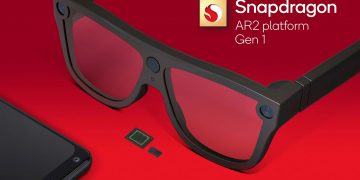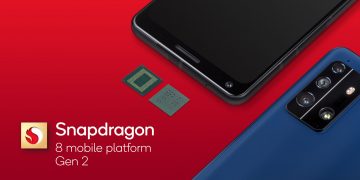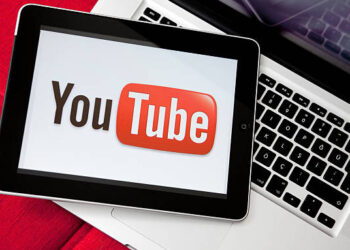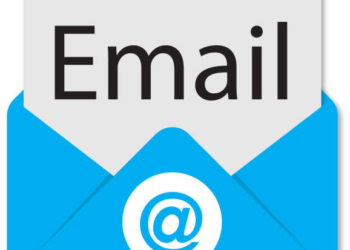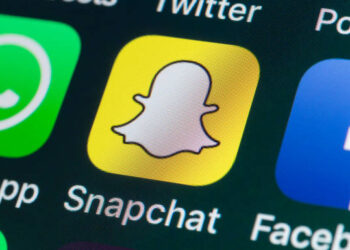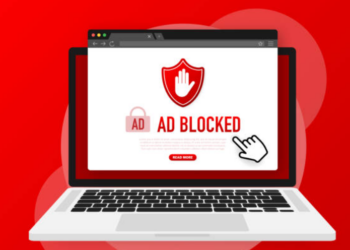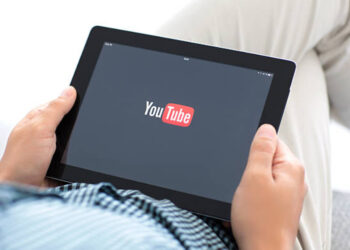It didn’t take long for Elon Musk to weaponize his shiny new $44 billion toy. He’s made a few changes and promised many more, but for now, the most controversial update is what he wants to do with verification. Musk says he wants to open up Twitter’s blue checks to anyone who wants to pay for them and take them away from the people who don’t.
Under the guise of bringing “power to the people” and overhauling a “bullshit” system, Musk announced on Tuesday that Twitter may soon charge users $8 a month for a Twitter Blue subscription in order to gain or keep their verified status and the blue check badges that come with it. And if that sounds like a lot of money, it could be worse: Author Stephen King inadvertently bargained Musk down from $20. It’s a bold plan, one that ignores the reasons the existing system was put in place and potentially undermines the overall trust in Twitter that it’s supposed to provide.
King wasn’t the only critic of Musk’s idea, but he got the nicest response. Musk’s other tweets consisted of a few uncredited memes and telling two complainants (including Rep. Alexandria Ocasio-Cortez) to pay him $8 for the privilege of doing so.
As far as we know, you’ll still get free Twitter. Musk says paid users would get a verification badge, and their tweets would get priority in replies, mentions, and searches; they’d also get to post longer videos, and they’d see fewer ads (but they’d still see ads). It probably shouldn’t even be called a “verification” badge anymore, either, as identity verification reportedly may not be necessary to get one (the money, it seems, is plenty and enough). And the blue check would no longer be a way to mitigate the spread of disinformation, as it was originally designed to be. Depending on who is willing to give Elon Musk $96 a year and what they have to say, it may well amplify it.
This all assumes, of course, that what Musk says on Twitter is actually true.
Truth on Twitter can be as hard to find as it is important, which is why the verification system exists in the first place. The system does not exist to tell users that some people are special and others aren’t, which is what a lot of people who aren’t verified (and don’t like a lot of the people who are) seem to think. It’s designed to give anyone who reads those tweets some reassurance that the person who’s sending them is who they claim to be, which comes in handy when you’re relying on those people to disseminate important information. That includes everything from movie stars’ public statements to safety warnings from the Centers for Disease Control and Prevention to breaking news from journalists. This is something that Musk’s big plans for Twitter Blue and verification will upend. And that’s why a lot of people are upset about it.
What those blue checks actually do and why
If you’re one of the many people in the world who don’t use Twitter, you may not understand exactly what a blue check is, why you should care about it, or why it seems to be so crucial to Musk’s business plan for Twitter. You may think none of this applies to you. Directly, it probably doesn’t.
But the blue checks are about more than just a badge next to a name. (Also: The blue checks are actually white checks inside a blue circle with scalloped borders.) Like many of Twitter’s best and most enduring features, the verification badges were an attempt to solve a problem Twitter also created.
Twitter began verifying accounts in 2009 to settle a lawsuit from famous baseball guy Tony La Russa over a fake Tony La Russa account. Back then, it was relatively easy to squat on a famous person’s name and make a fake account pretending to be them. That’s why Donald Trump had to go with “@realDonaldTrump” when he joined Twitter; someone had already taken @donaldtrump and made it a Trump parody account. Tina Fey says she’s never been on Twitter, but a lot of people sure thought @TinaFey (now @NotTinaFey) was her. And then there are the many, many Fake Will Ferrell Twitter accounts. That said, like most things Twitter, verification isn’t perfect: Author Cormac McCarthy’s fake account was somehow verified as recently as 2021.
Twitter first doled out the checks to high-profile and official accounts, then expanded the program to accounts that weren’t necessarily celebrities. That group included accounts that Twitter wanted its users to trust were run by the people and institutions they claimed to be associated with — namely, politicians, brands, and journalists.
Disclosure: I have a blue check mark, but as someone who once did not have one, I understand the envy and bitterness over them that some unverified people seem to feel. I also know that I have mine only because of my job. It’s not the status symbol people seem to think it is. It’s part of Twitter’s recognition that journalists are some of its most prolific users, that a lot of people use Twitter to keep up on the news those journalists tweet, and that it’s therefore important to all parties if they know whose word they can rely on.
Now let me give you an idea of what Twitter was like back when those blue checks were harder to come by, and the world we may return to once blue checks have to be bought. Back in 2012 or so, the process for being verified was even more opaque and arbitrary than it is today. You got verified if you were famous enough that someone at Twitter decided you needed it, or if you knew someone at Twitter, or if the publication you worked for had an in with Twitter’s small Journalism & News team. Back then, I will admit, a blue check was special, because it was rarer and you had to be somebody or know somebody to get it.
In 2016, Twitter let people apply to be verified. A lot more people got blue checks, although some people who probably should have gotten blue checks were denied and some people who really shouldn’t have gotten them were accepted. When people started asking why white supremacists were getting blue checkmarks, Twitter revoked the badges and closed down the verification application process altogether. The company only reopened it last year.
“The verification system is imperfect and a little bit problematic in the way that it’s currently formed,” Jillian C. York, director for international freedom of expression at the Electronic Frontier Foundation, told Recode. Even with the application system, Twitter ultimately does pick who gets to be verified and who doesn’t, she said, and it has made mistakes and tends to favor people in the US. But she still thinks Twitter’s current verification system is better than what Musk is proposing to replace it with. “It’s still a symbol that somebody has vetted you. Somebody has checked you out.”
There are currently about 425,000 verified accounts, according to @verified. That’s enough for the blue check to no longer be the exclusive special symbol it was once seen as, but it’s also a small percentage of Twitter’s total user base, which Twitter has said is about 240 million monetizable (as in, actual people and not bots) daily active users. But that number is only a fraction of the user base of far more popular and profitable platforms like Facebook, Instagram, YouTube, and TikTok. A recent report says that the vast majority of tweets come from relatively few users, and those heavy tweeters are in decline — which is another, much more difficult, problem that Musk will soon have to solve and might want to focus more of his energies on.
Elon Musk’s obsession with verification
So why are blue checks so important to Musk? Likely because he assigns a value to them that he thinks the vast majority of Twitter’s users share and therefore will be willing to pay for if given the chance. Plus, messing with them is a great way to hurt journalists, a profession he really doesn’t like, especially when he thinks it’s being mean to him. This is also a way to appeal to the right-wing base to which he’s become some kind of savior.
Slowly but surely, the right wing has made “blue check” into a pejorative, a way to collectively describe people they don’t like — especially journalists and supposedly woke SJW celebrities. (Some of the same people who make fun of blue checks also have blue checks, but somehow theirs don’t count.) There’s also the fact that Twitter “punished” certain accounts by taking away their blue checks, which upset one blue check-loser so much that he tried to tell on Twitter to the White House.
To some, blue checks are seen as a mark of privilege, something they can’t have that’s possessed by people they don’t like. There is a sense that being verified is extremely important to the ego-driven, left-wing elitist journalist, and that those blue checks simply couldn’t live without their little badges or the thought of the unwashed masses having them, too. So if you’re Elon Musk and looking for a way to make money, stick it to people you don’t like, and please your adoring fans, charging for a blue check might seem like a great way to accomplish all three in one fell swoop. Bonus points for framing it as a way to “bring power to the people” and get rid of Twitter’s “current lords and peasants system” … as long as, you know, the peasants can pay $8 a month to become a lord. It’s also a way to compromise one of the very things the system was designed for.
Musk says this is also “the only way to defeat the bots and trolls,” but hasn’t quite explained how or why he thinks anyone who wants to abuse the platform will also pay $8 a month, especially when Twitter is otherwise free to use. We don’t even know if he’ll be able to implement the new system as soon as he reportedly wants to, since he’s frozen out most of Twitter’s workforce and massive layoffs are underway.
Twitter also will not, reportedly, require identity authentication for its new class of blue checks. This would completely change the purpose of those checks and likely confuse people who have spent the last 13 years thinking of Twitter’s blue check as a mark of authenticity.
“Verification check marks without verification of identity defeat the purpose and instead simply provide proof of payment,” York said. “While charging users for features is fine on its own, it makes no sense to call this ‘verification.’”
For people who aren’t verified and have always wanted to be, I can see why paying for a blue check is so attractive. But Musk and his acolytes, who seem to think blue checks are only about status, don’t seem to understand why the company has, over the years, made a series of decisions about who and what the platform should verify and amplify (or suppress). These decisions weren’t made because Twitter employees are sensitive snowflakes who can’t stand to see conservative viewpoints. They were made because Twitter is a business, and it made business decisions to minimize objectionable and harmful users and content. That includes things like misinformation, racial slurs, conspiracy theories, state-sponsored propaganda campaigns, and calls to violence. It never did those things perfectly, but it knew why it had to try: Users generally didn’t want to see that stuff, advertisers didn’t want their products featured alongside it, and it’s a really bad look for a company to be seen as a purveyor of harmful content, to the point that it’s partially blamed for a genocide.
Musk threatens to throw all of that away rather than learning from it and continuing to improve the company he’s already sunk so much of his money and reputation into. It’s not just a matter of people who spread harmful content getting verified and being able to spread it even more widely. It’s also a matter of a lot of accounts that were verified for good reason losing that status because they understandably don’t want to pay Musk. Their posts will, presumably, be shoved down under those of the paid users, and that’s if they continue to use the service at all. If people are willing to pay a little more to spread misinformation, Twitter will become an even greater amplifier of harmful lies than it already is.
Also, there’s reason to believe that the blue check won’t be much of a status symbol — if it ever was one — when anyone who has $8 to spare can get it. Dr. Seuss taught us this a long time ago. But hey, this is the guy who built a reusable rocket, thanks in part to his vision but mostly to SpaceX’s talented engineers and massive government subsidies. He may well see something in Twitter and blue check payola that the rest of us don’t, and all of these seemingly spur-of-the-moment decisions were actually carefully considered and months in the making.
If not, the blue check will soon only signify that the name it’s next to was willing to pay for something that used to be free. As Musk himself tweeted, “you get what you pay for.” Now we’ll see what it’s actually worth.
Update, 12:05 pm ET: This story has been updated to include comment on the news that Twitter might not verify subscribers.
Source by www.vox.com


